It's Fair Time And We Are Ready For This Years First Visit 7/18/2015 (Page Two)
It's Saturday morning and time to go to the fair! We got there at 9:45 and were first in line to enter at 10:00 at the Yellow Gate!
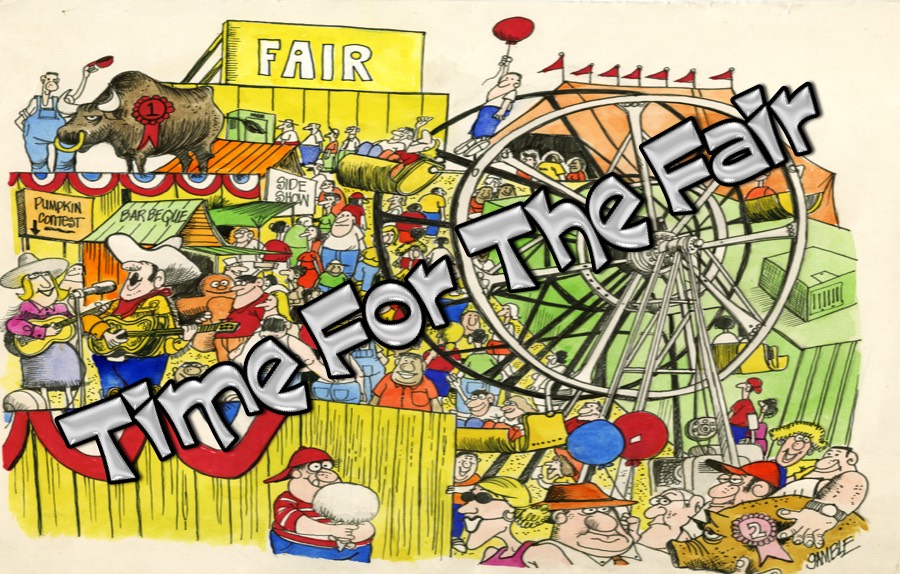
We were very excited about being first in!
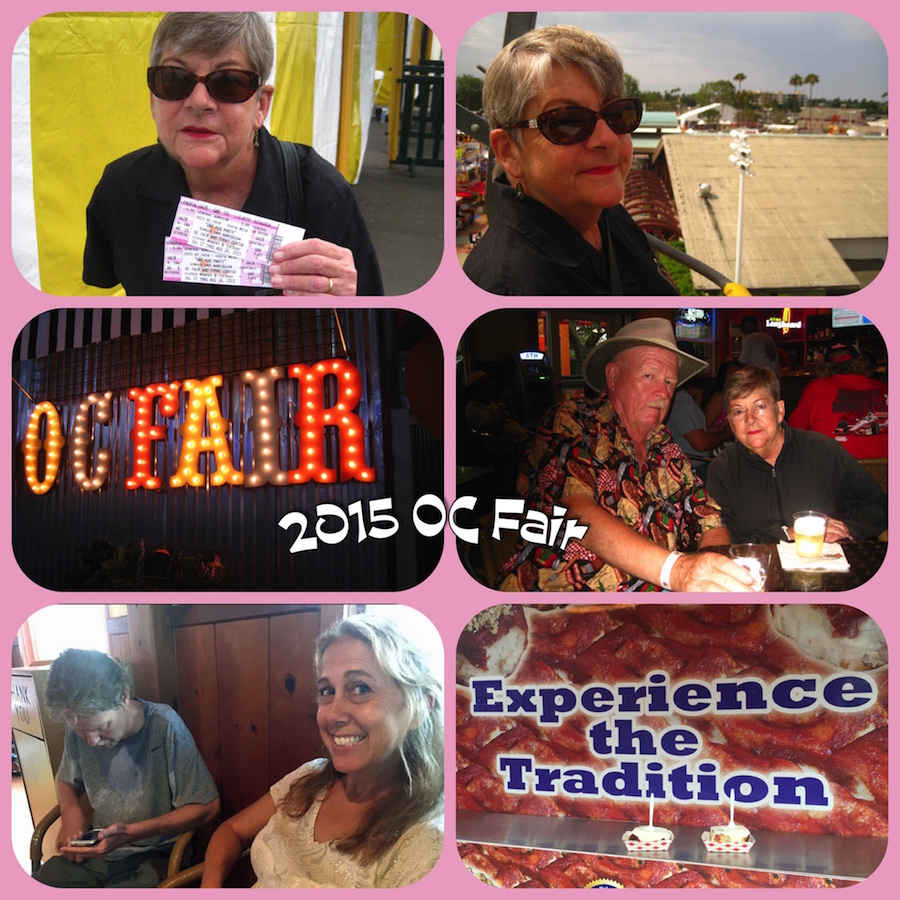
Fun at the fair

The tent was about 30 feet from the main entrance!

We are now ready to go!

Proof of purchase

Patiently awaiting the 10:00 bell

The clouds look threatening.... 50% chance of rain!

We had a great view while waiting for the 10am opening time

Ah... No problem... It is going to miss us!
We thought!

...but it says "Showers"
The Gates Opened...We Are On Our Way!
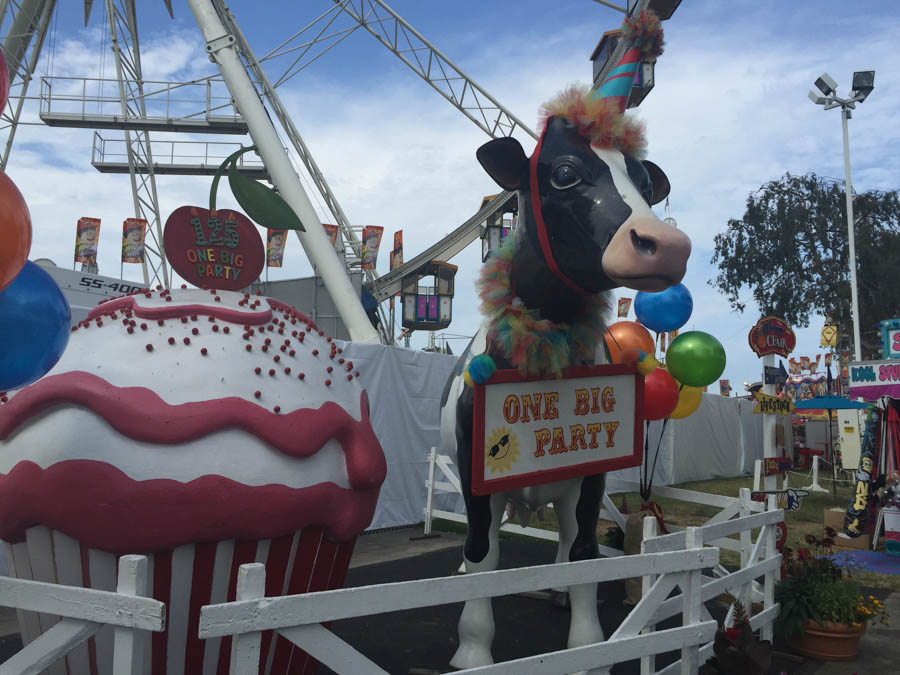
Party time!
Mr. Cow was greeting the guests
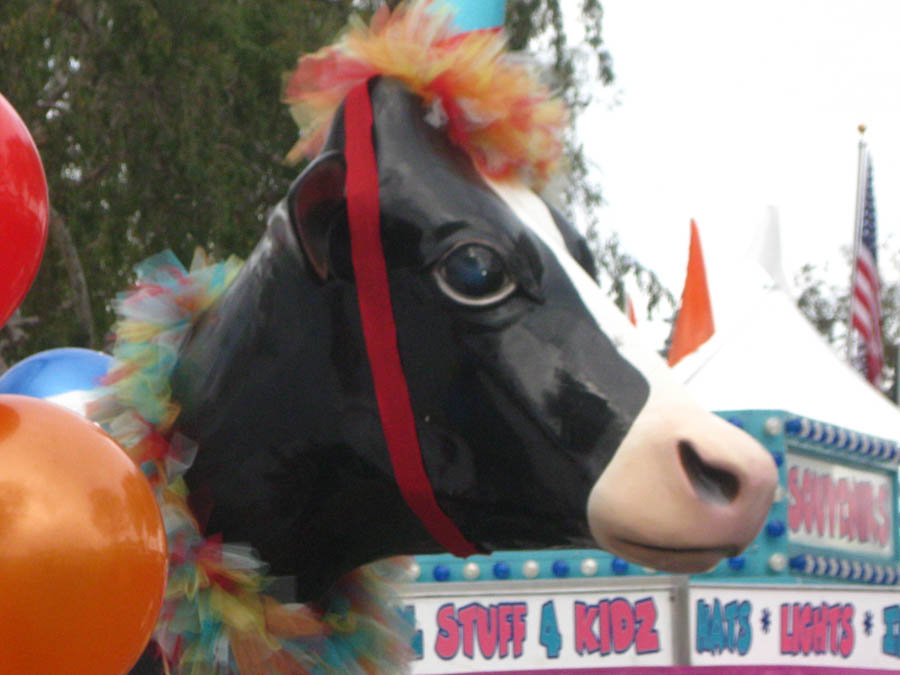
Mr. Cow was ready to party
First Stop? Cinnamon Buns!


They are ready to be eaten!
Did You Know? - Cinnamon has been known from remote antiquity. It was imported to Egypt as early as 2000 BC, but those who report it had come from China confuse it with cassia.
Cinnamon was so highly prized among ancient nations that it was regarded as a gift fit for monarchs and even for a god: a fine inscription records the gift of cinnamon and cassia to the temple of Apollo at Miletus.
Though its source was kept mysterious in the Mediterranean world for centuries by the middlemen who handled the spice trade, to protect their monopoly as suppliers, cinnamon is native to Bangladesh, Sri Lanka, the Malabar Coast of India, and Burma.




Must have cinnamon rolls and iced mocha coffee

It always works! Starts the heart!
Off To Go Flying Across The Grounds Sixty-Five Feet In The Sky

These pigs are having entirely too much fun!

Up up and away

Fried anything!

Seriously?

Looks icky
... We didn't have the fortitude to try it!

They are readying the stadium for some kind of car race

This part of the fair grounds has changed a lot over the years!

Sixty-five feet in the sky!

Trucks everywhere

The kiddy-land seemed small this year!

This part of the grounds are totally new
... Called the Plaza Stage

You are welcome.... Quite welcome!!
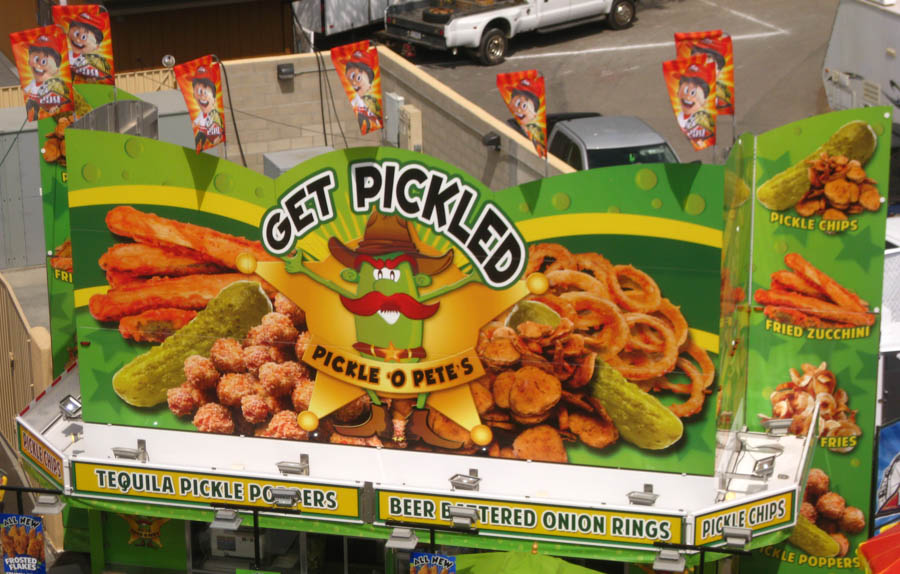
That is the plan!
Let's Walk to Centennial Gardens!
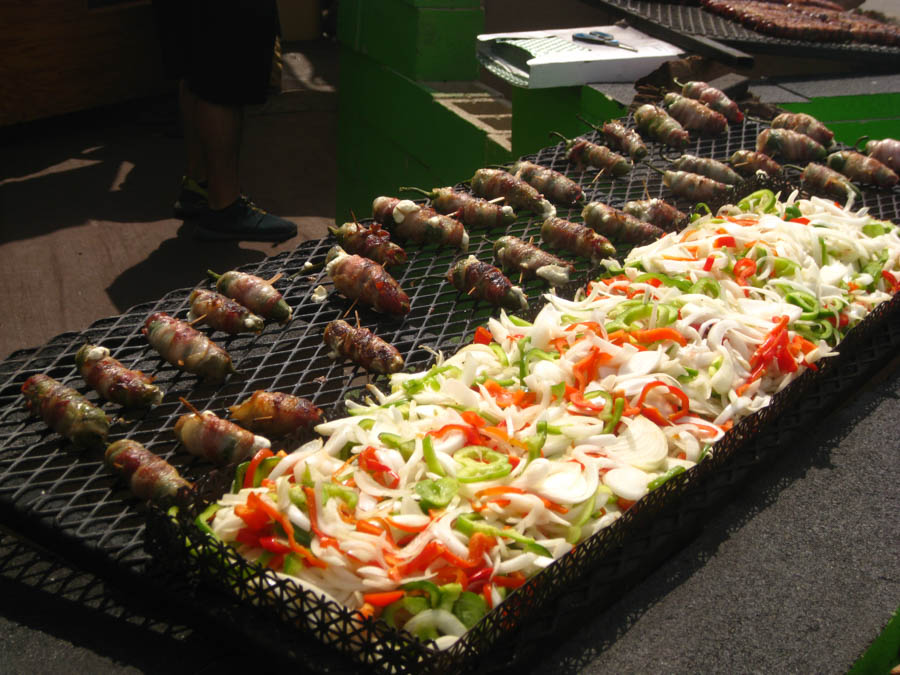
Great smells but we were full of cinnamon rolls...
This got us in the mood to see all the food in the gardens

Welcome to the farm
Did You Know? - Centennial Farm is a three-acre working farm at the OC Fair & Event Center created to educate youth about agriculture and its importance to daily life. The Farm is home to fruit and vegetable gardens, livestock, and the Millennium Barn.
Children and adults can view pigs, chickens, cattle, goats and more while strolling though gardens of lush vegetation.
We do ask that you please do not pick our crops as they are used for educational purposes. Centennial Farm offers tours as well as general public hours see hours below.
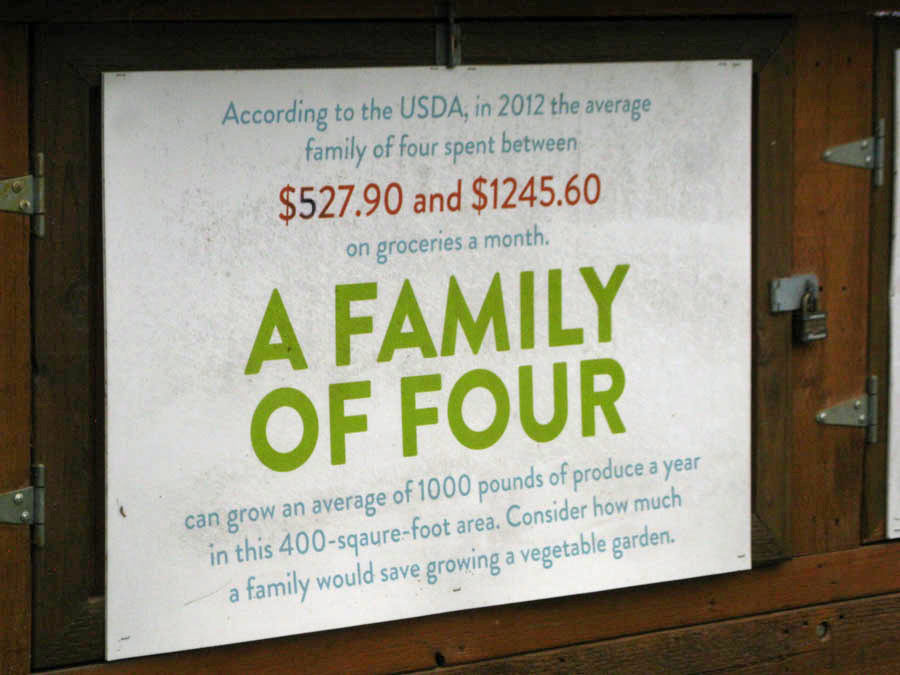
We grow ours! Do you?
We save millions!

Why do they have to post a sign that is so obvious!
People are just basically stupid!
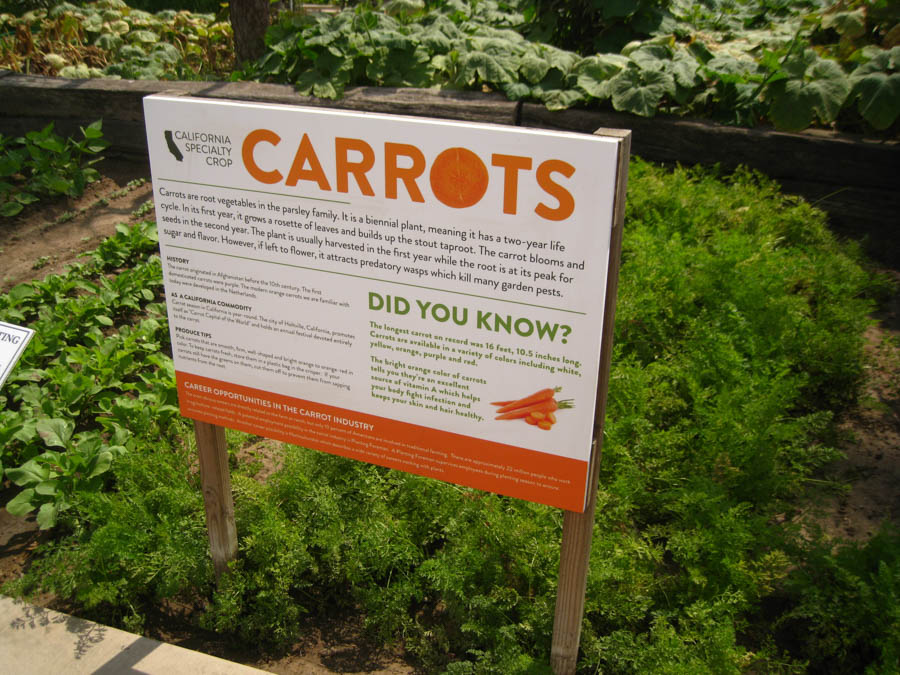
Some of the signage was new and quite well done!
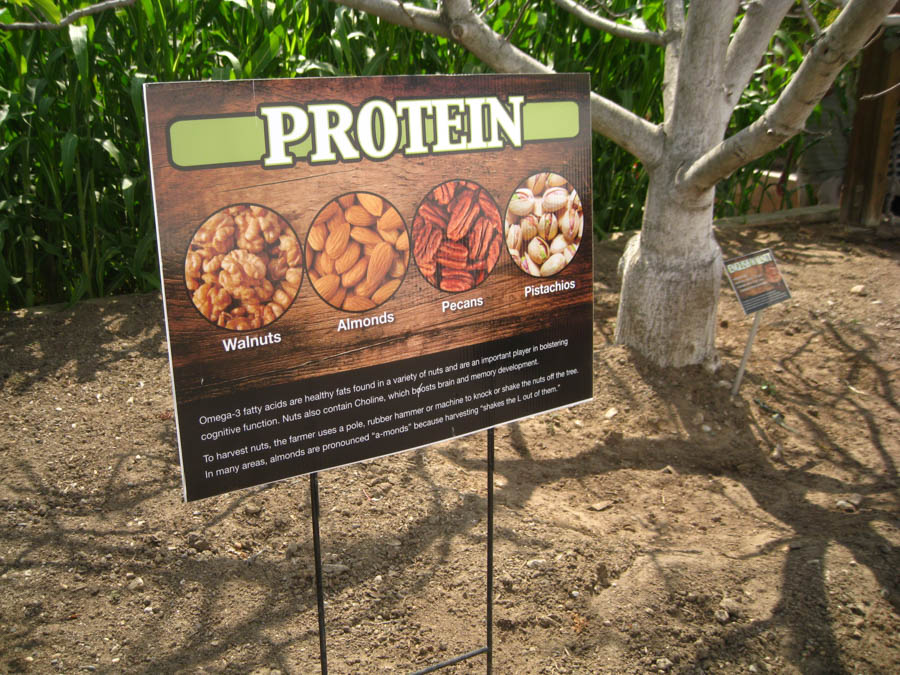
Nuts!
Did You Know? - Vegetarian sources of proteins include legumes, nuts, seeds and fruits. Legumes, some of which are called pulses in certain parts of the world, have higher concentrations of amino acids and are more complete sources of protein than whole grains and cereals.
Examples of vegetarian foods with protein concentrations greater than 7 percent include soybeans, lentils, kidney beans, white beans, mung beans, chickpeas, cowpeas, lima beans, pigeon peas, lupines, wing beans, almonds, Brazil nuts, cashews, pecans, walnuts, cotton seeds, pumpkin seeds, sesame seeds, and sunflower seeds.
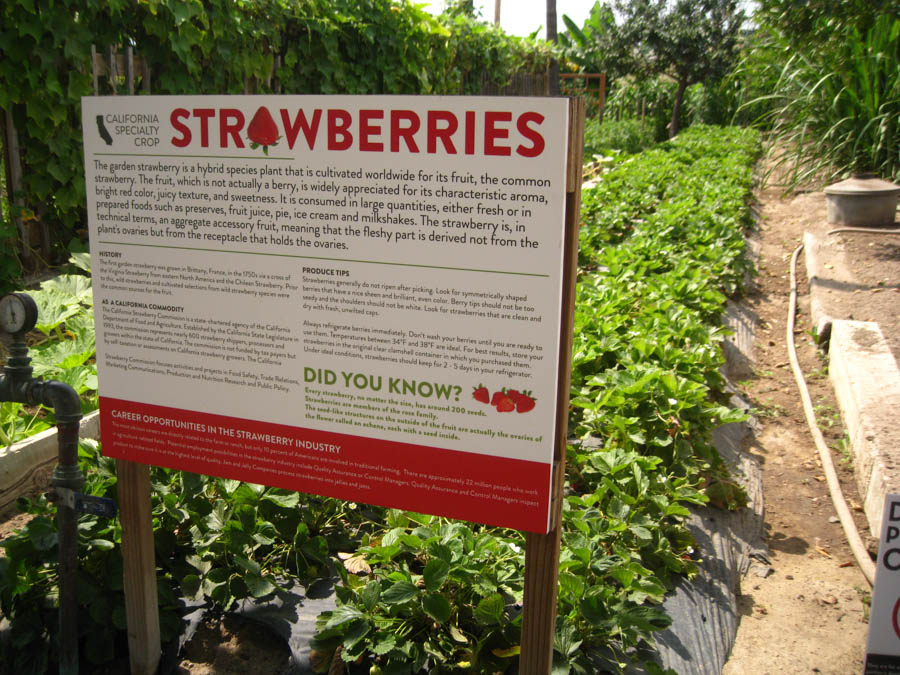
They are looking pretty good!
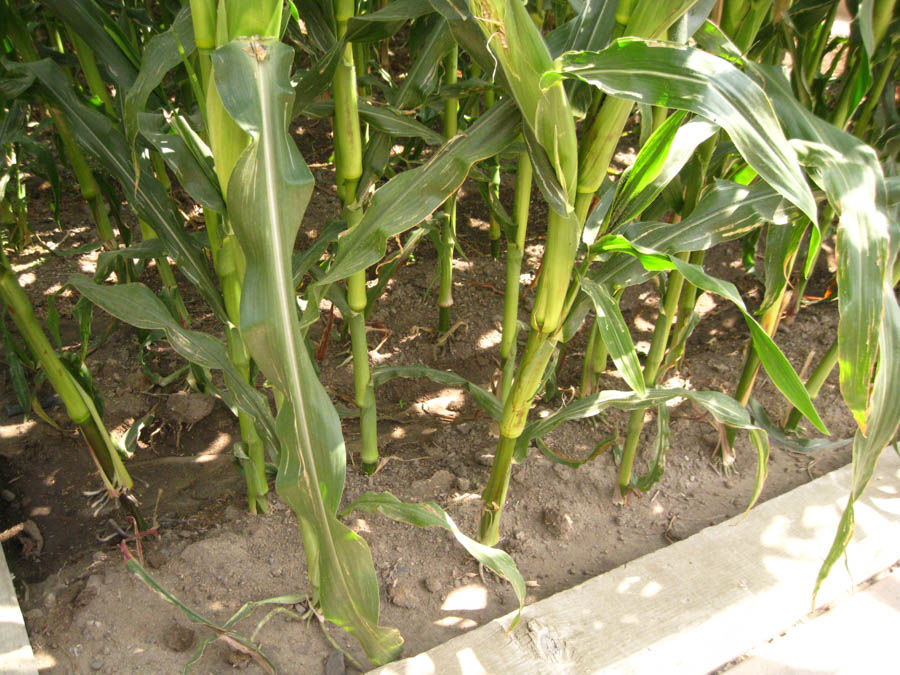
We examined the corn carefully.... It is very close together!

Maybe eight-inch spacing between plants!

The corn is as high as an elephants eye!

This corn was twelve feet tall!

Pointing toward the sky!

Beautiful plants
 Scarlet runner beans were in full growth
Scarlet runner beans were in full growth
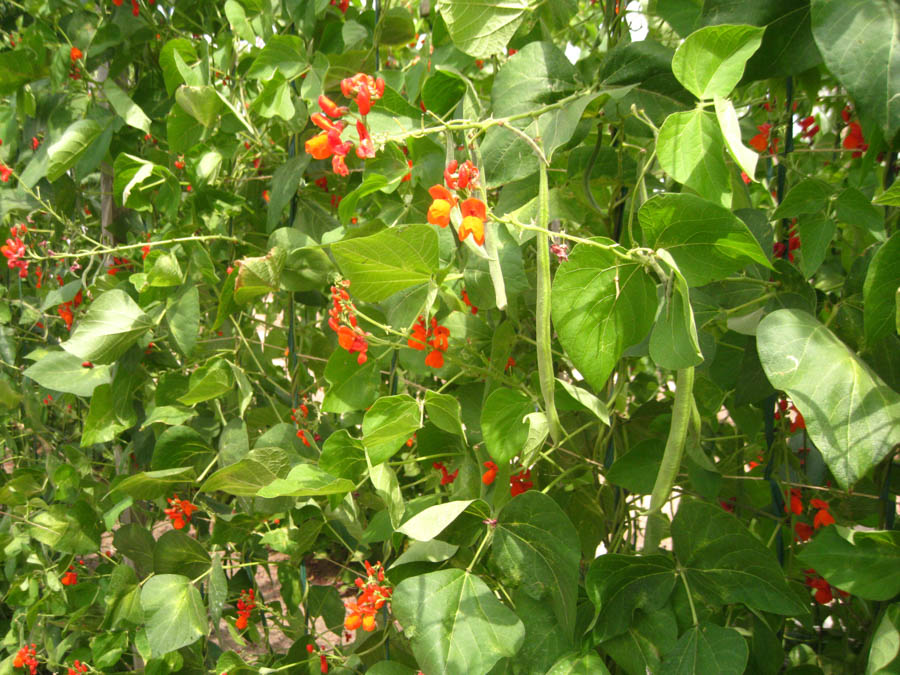
The blossoms were pretty
Did You Know? - The runner bean or scarlet runner is an easy-to-grow plant ideal for beginners. They often receive a bad reputation possibly due to tough shop-bought ones, but home-grown runner beans can be picked when they are just ready and are a delicious and attractive addition to any vegetable plot.
Their red or white flowers add a splash of color and as one of the legumes they take nitrogen from the air and fix it in their roots, ideal for leafy, nitrogen-loving, brassicas to follow.
In the US, in 1978, the scarlet runner was widely grown for its attractive flowers primarily as an ornamental. Since that time, many US gardeners have adopted the bean as a regular member of the vegetable garden. The flower is known as a favorite of hummingbirds. In the UK the flowers are often ignored, or treated as an attractive bonus to cultivating the plant for the beans.
The seeds of the plant can be used fresh or as dried beans. The pods are edible whole while they are young and not yet fibrous. The starchy roots are still eaten by Central American Indians.
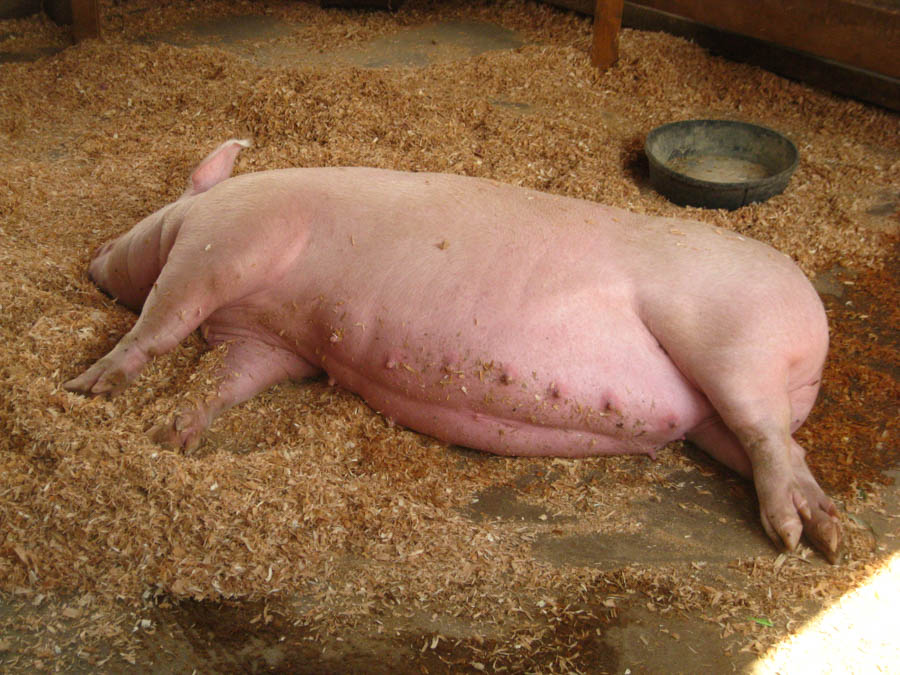
Mommy is due almost any time!
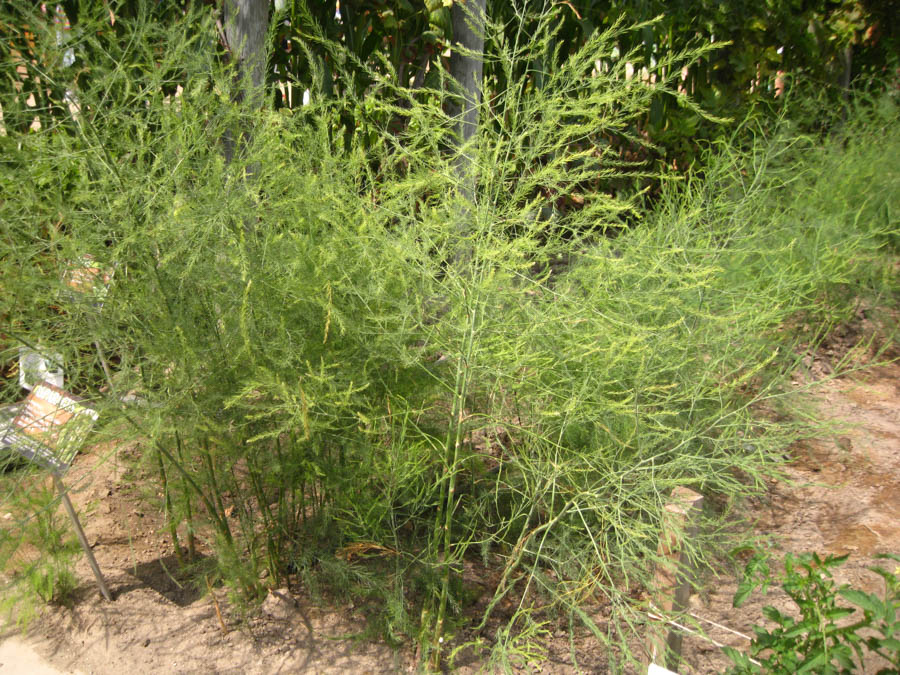
We are growing asparagus so we checked it out carefully

Looks just like ours at home
Did You Know? - Asparagus has been used as a vegetable and medicine, owing to its delicate flavour, diuretic properties, and more. It is pictured as an offering on an Egyptian frieze dating to 3000 BC. In ancient times, it was also known in Syria and in Spain.
Greeks and Romans ate it fresh when in season, and dried the vegetable for use in winter; Romans even froze it high in the Alps, for the Feast of Epicurus. Emperor Augustus created the "Asparagus Fleet" for hauling the vegetable, and coined the expression "faster than cooking asparagus" for quick action.
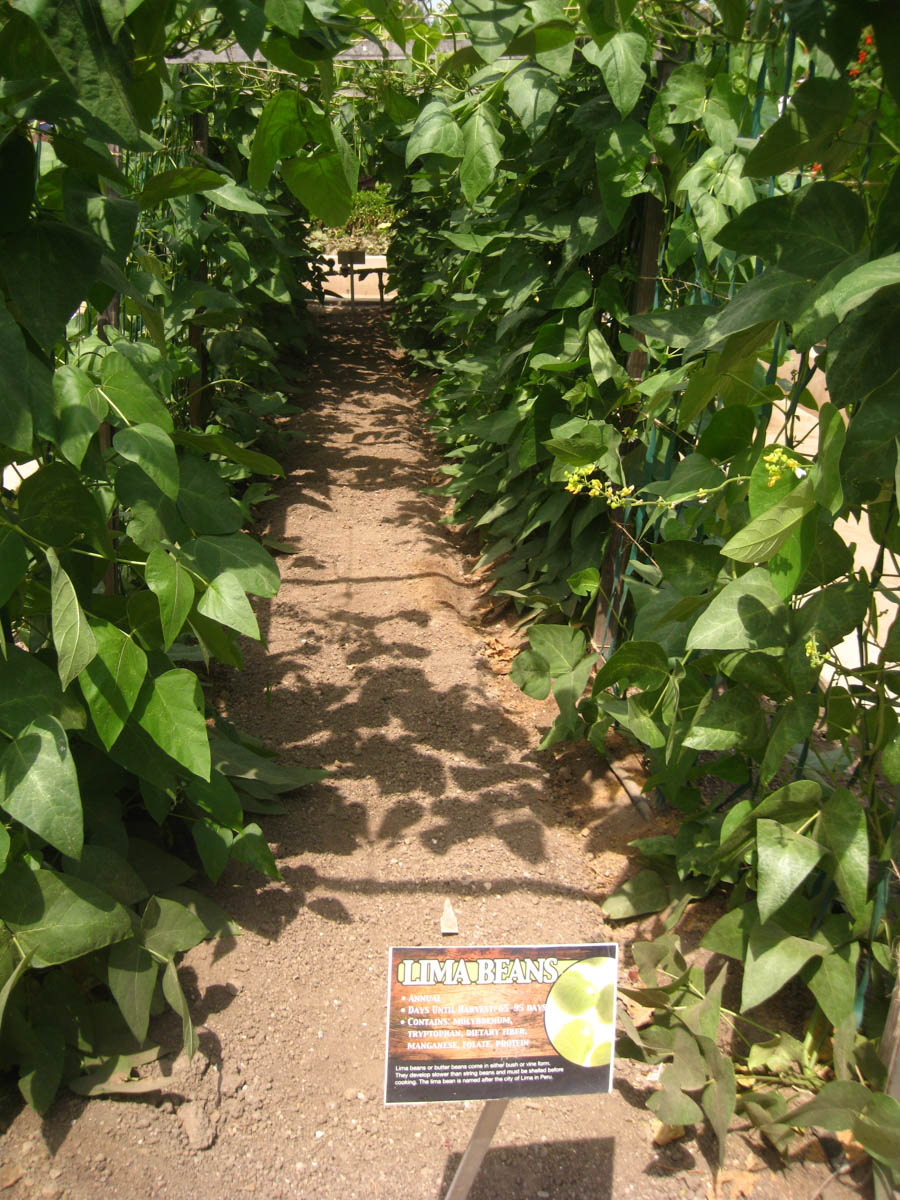
The lima beans were doing quite well
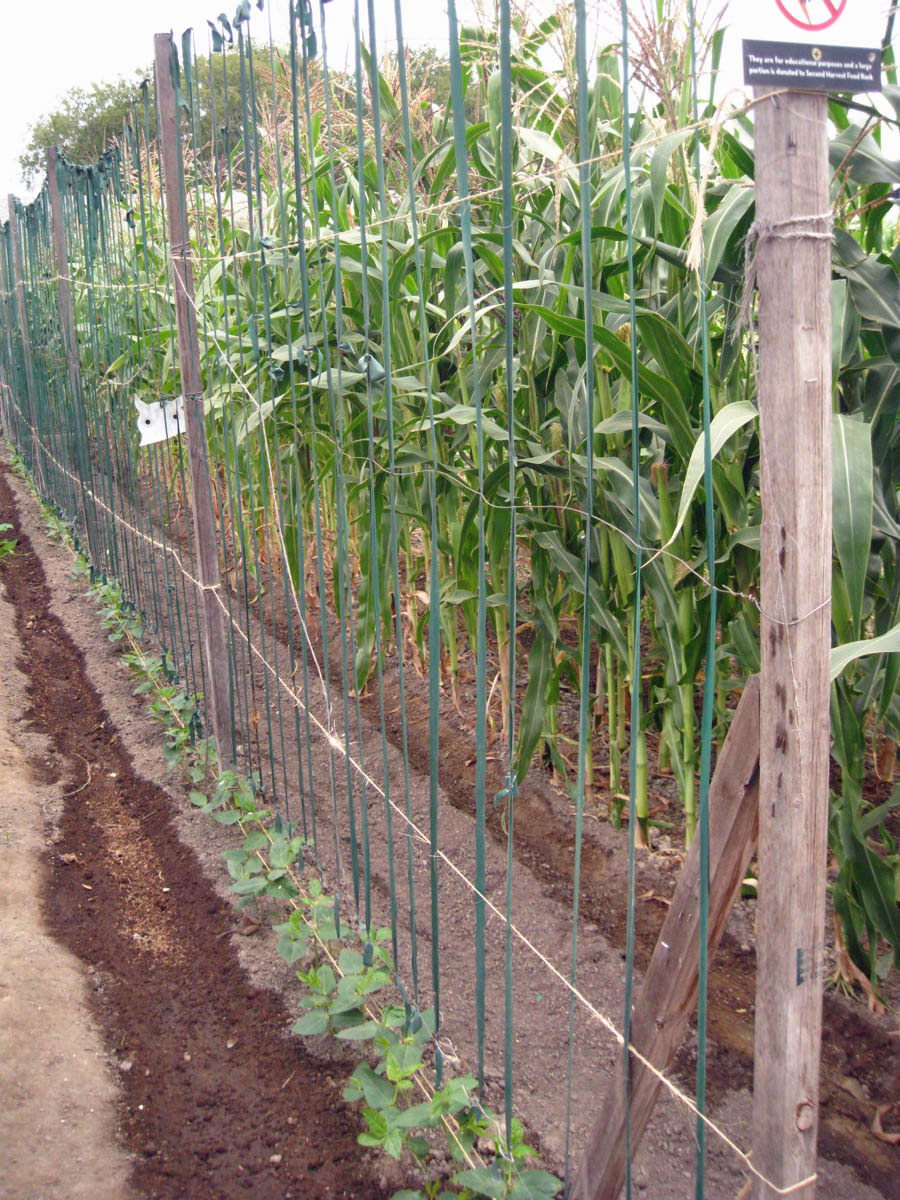
They have green beans just starting!
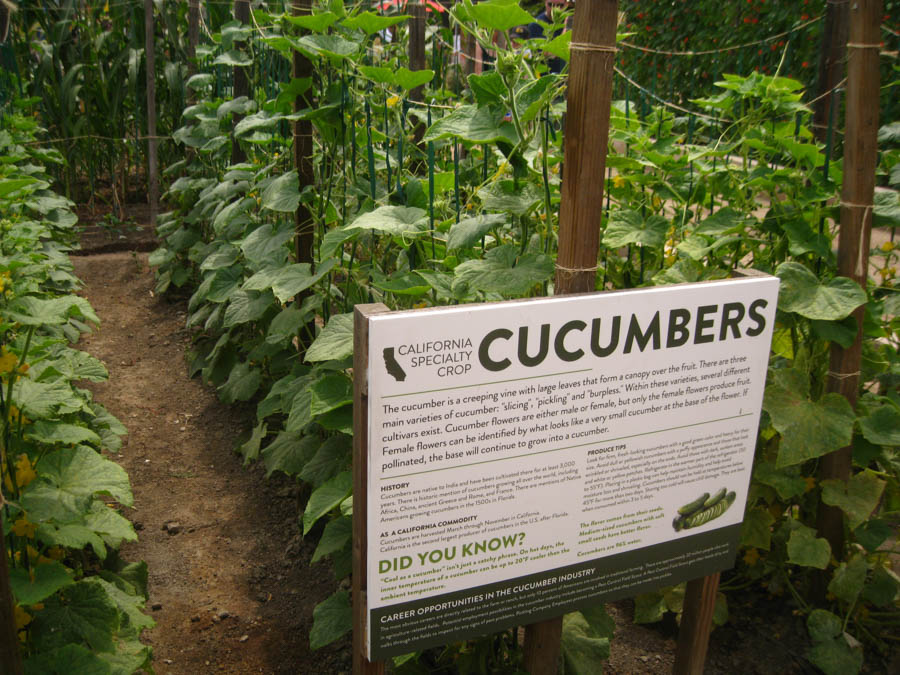
The cukes seems to grow up on anything!

Quite interesting
Did You Know? - Edible plant stems are one part of plants that are eaten by humans. Most plants are made up of roots, stems, leaves, flowers, buds and produce fruits containing seeds.
Humans most commonly eat the seeds (e.g. maize, wheat, coffee and various nuts), fruit (e.g. tomato), leaves (e.g. lettuce, spinach, and cabbage), or roots (e.g. carrots and beets), but humans also eat the stems of many plants (e.g. asparagus).
There are also a few edible petioles (leaf stalks) such as celery, as well as some edible flowers.

The pomegranates were loaded!
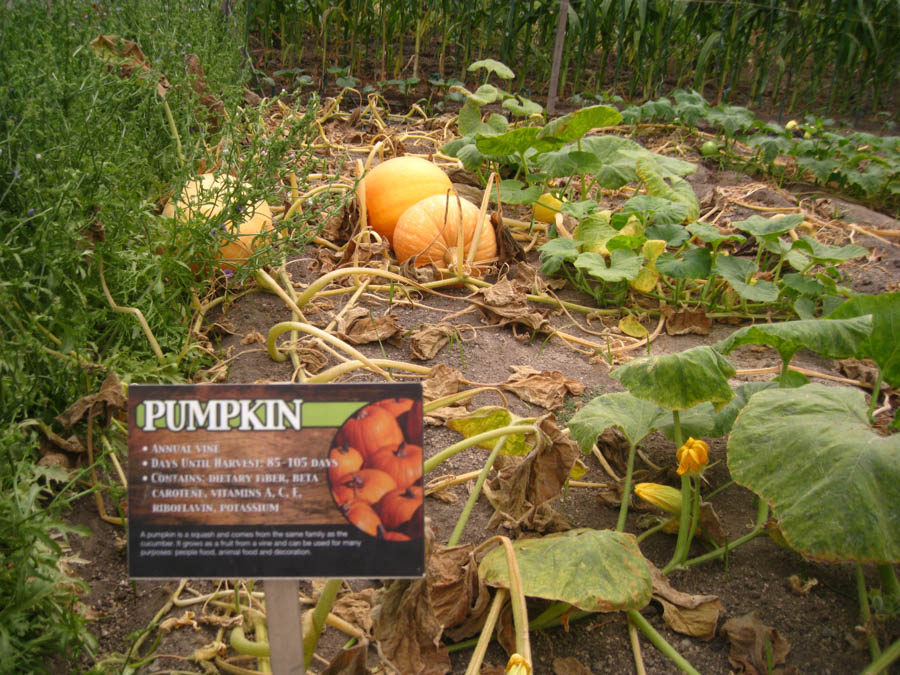
Such an interesting but ugly plant!
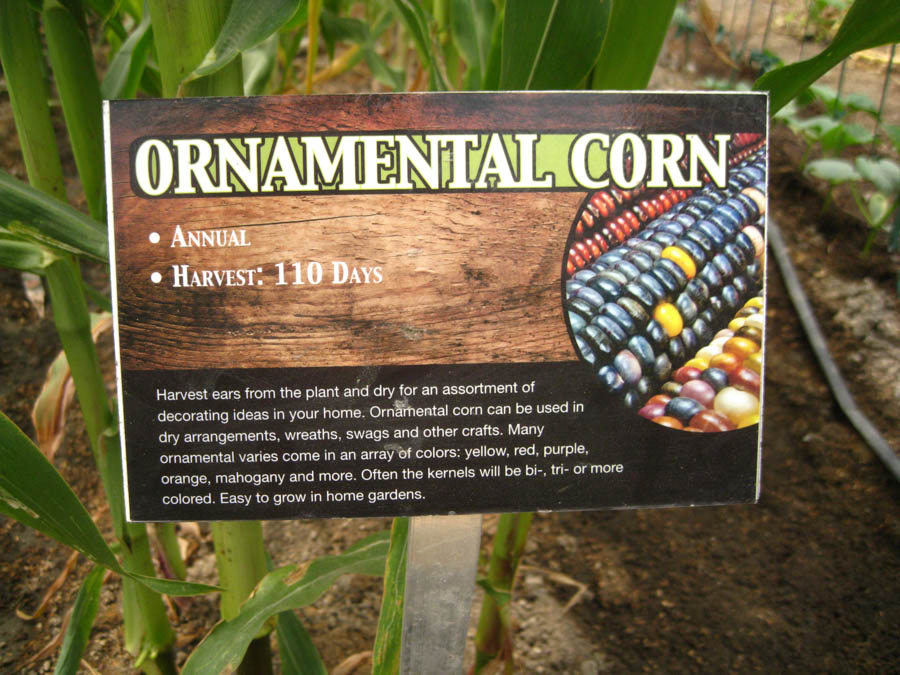
It is actually edible
Did You Know? - With less soft starch than dent (yellow) corn (Zea mays indentata), flint corn does not have the dents in each kernel from which dent corn gets its name. This is one of the three types of corn cultivated by Native Americans, both in New England and across the northern tier, including by tribes such as the Pawnee on the Great Plains.
Archeologists have found evidence of such corn cultivation by the Pawnee and others before 1000 BC.
Cultivation of corn occurred hundreds of years earlier among the Mississippian culture people, whose civilization arose based on population density and trade because of surplus corn crops.
Distinctive traits
When fully ripe, dent corn has a pronounced depression or dent at the crown of each kernel. Flint corn kernels lack these depressions.
Because flint corn has a very low water content it is more resistant to freezing than other vegetables. It was the only Vermont crop to survive New England's infamous "Year Without a Summer" of 1816.

This corn produces small corn and about 20-30 per plant!

They have loads of plants

The lettuce was just getting started!

Some of these sun flowers were ten feet tall!

Their herb garden was loaded with plants and they were looking pretty good
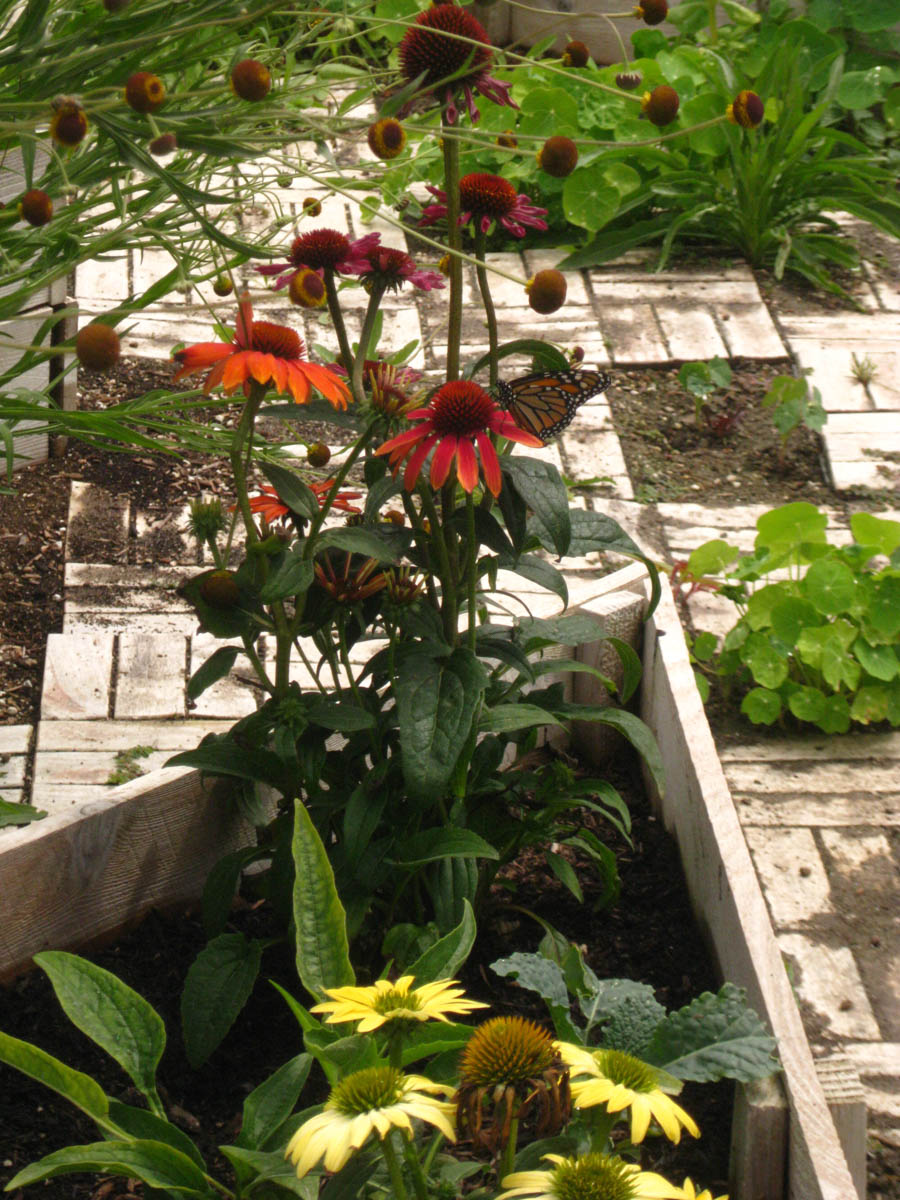
They had a special place for Mexican herbs
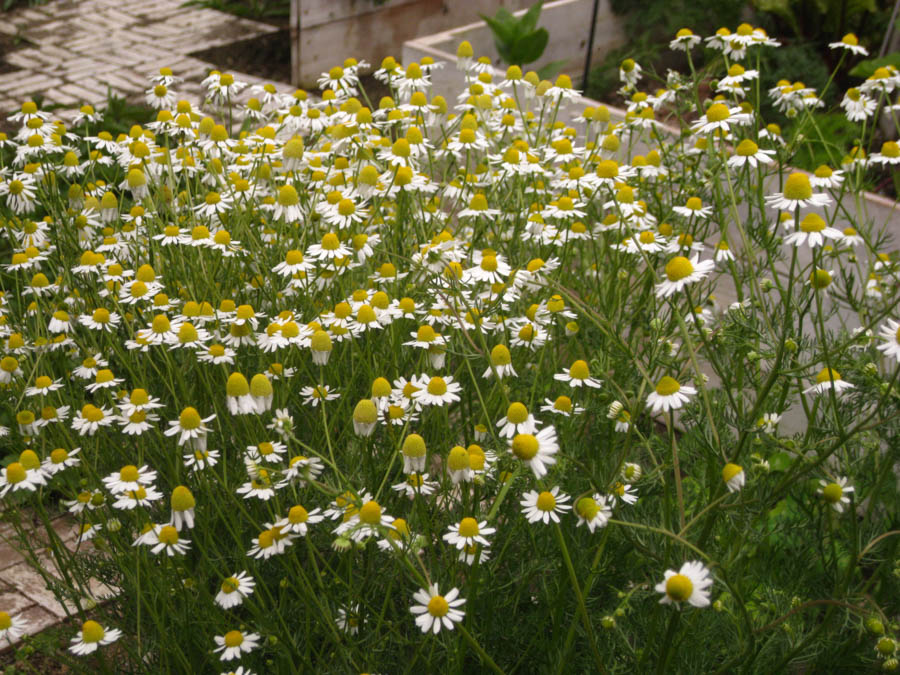
Daisy's
Did You Know?
1 - Daisies belong to one of the largest families of plants in the world, that of "vascular plants", i.e. those which circulate goodness around their systems, making up almost 10% of all flowering plants on Earth.
2 - Daisies are found everywhere on Earth except Antarctica.
3 - The name "daisy" is thought to come from the Old English "daes eage", meaning "day's eye", for the way in which it opens at dawn.
4 - The daisy family, known to scientists as Compositae, was classified in 1792 by Paul Dietrich Giseke, a German botanist and close friend of the Swedish "father of modern taxonomy" Carl Linnaeus.
5 - Daisies represents purity and innocence.
6 - A daisy is actually two flowers in one: the (usually) white petals and the cluster of (usually) tiny yellow disc petals that form the "eye".
7 - Daisy leaves are edible and can make a tasty addition to salads (they're closely related to artichoke and are high in Vitamin C).
8 - Medicinal properties ascribed to the daisy include that it slows bleeding, relieves indigestion and eases coughs. In homeopathy, the garden daisy is known as the gardener's friend for its ability to ease an aching back.
9 - If not controlled, some daisies can become serious weeds because they thrive in generally inhospitable conditions are are resistant to most bugs and pesticides.
10 - Bees love daisy relatives, including Goldenrod, making them an important friend of honey makers.

Since we got new dirt in our garden, it is loaded with worms!
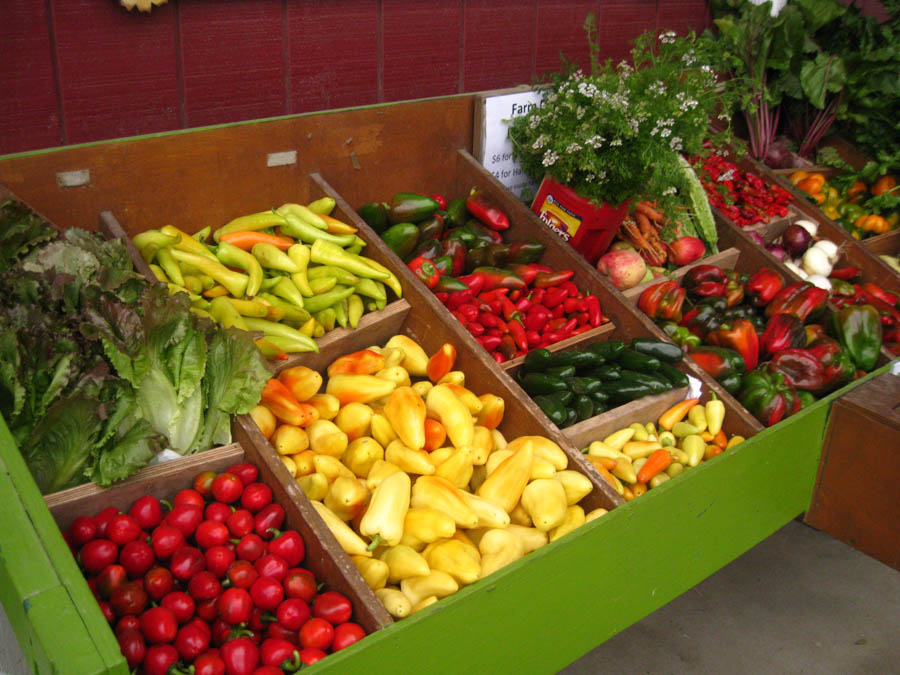
Yummy!
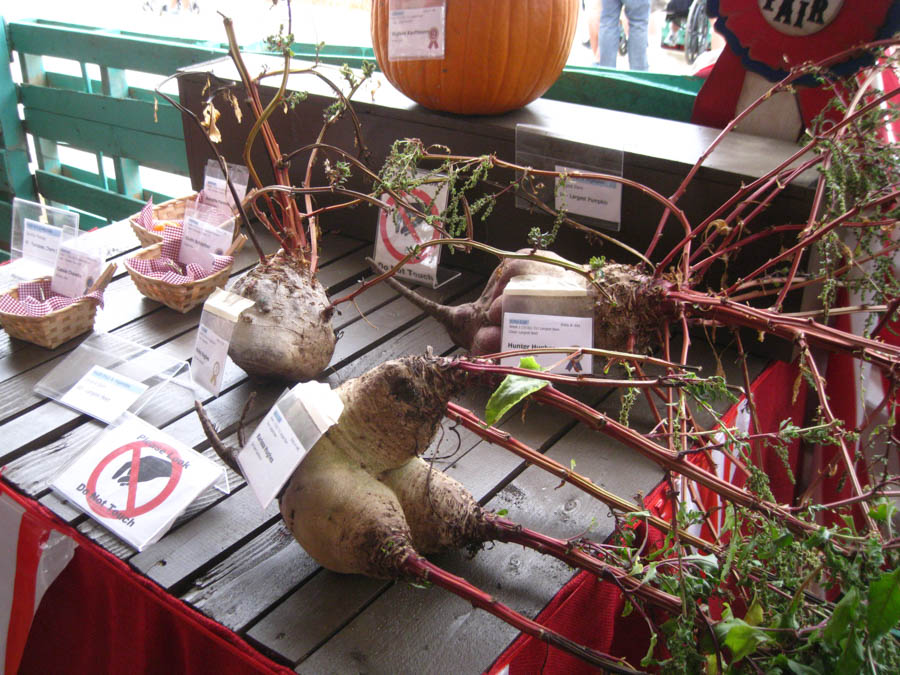
The vegetable and fruit displays always something interesting
These beets are quite amazing
Did You Know? - The beetroot is the taproot portion of the beet plant, also known in North America as the table beet, garden beet, red or golden beet, or informally simply as the beet.
It is several of the cultivated varieties of beet (Beta vulgaris) grown for their edible taproots and their greens. These varieties have been classified as B. vulgaris subsp. vulgaris Conditiva Group.
Other than as a food, beets have use as a food coloring and as a medicinal plant. Many beet products are made from other Beta vulgaris varieties, particularly sugar beet.

That's almost as old as Paul

Ah.... Twins!
or Split personality

The inside of the test was decorated also
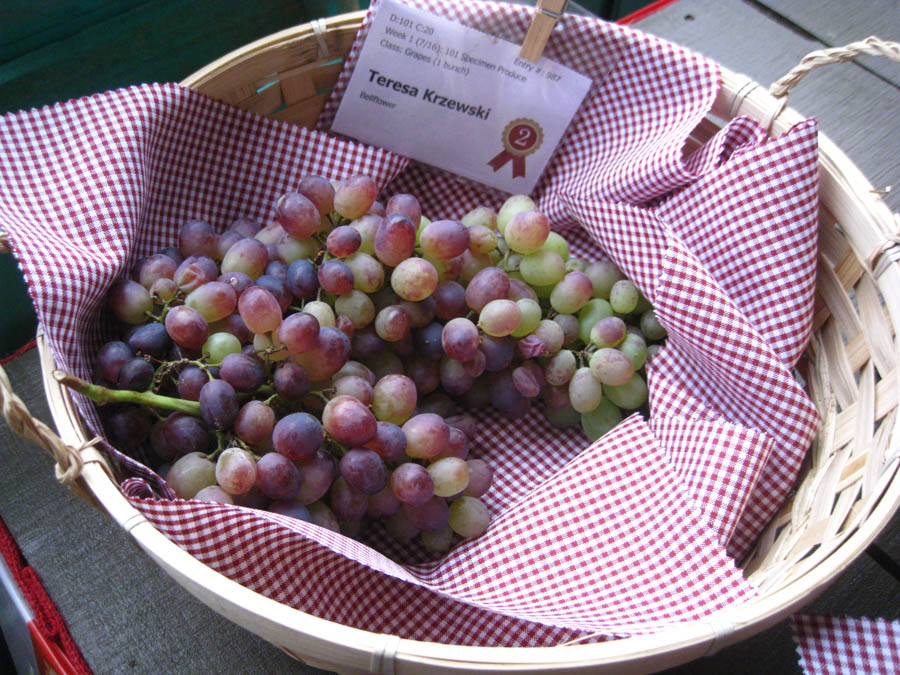
Just like grapes used to be!

We see these and we see French Onion Soup!

Hey big guy! Wanna meet a little friend?

Wine time

Weather check! It's getting warm
